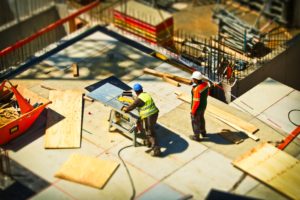
The results of July’s Census Bureau New Residential Construction Survey was a mixed bag.
Building permits in July grew month-over-month by 8.4% to 1.33 million, and 1.5% annually. Single-family authorizations also grew for the month, rising 1.8% from the month prior.
Falling, however, were housing starts, which declined 4% from June to 1.91 million, although still being 0.6% higher than a year ago. Single-family housing starts in July came in at 876,000—1.3% above June’s rate of 865,000.
Odeta Kushi, Chief Economist for First American Financial Corporation, referenced the current economic volatility, saying the inversion of the yield curve “does not mean that we’re imminently facing recession in the near future.”
“There are many factors to consider beyond the inversion of the yield curve when determining recession risk,” Kushi said. “Single-family housing starts have been a more reliable indicator, because they are a reflection of both homebuilder and consumer confidence.”
She added that homebuilders are “reluctant” to start new projects in fear the economy may fall.
“Over the last 40 years, a year-over-year decline of 20% or more in single-family housing starts has preceded all but one (2001) of the five recessions,” she said.
Realtor.com’s Senior Economist George Ratiu noted that markets needed new supply, as “first-time buyers have been facing a parched landscape this year.”
According to information from realtor.com, the inventory of properties priced below $200,000 in July fell 9.9% annually. Overall prices rose 5.5%.
A report by Redfin, however, shows that housing inventory took a hit in Q2 2019, falling 1%, which is its largest decline in six years.
“When there’s a shift in the market, new construction is always one of the first categories to take a hit,” said San Jose, California, Redfin agent Kristen Nowack. “In the San Jose area, overall prices are falling and there are plenty of homes for sale right now, which means buyers may be less likely to pay a premium for new construction.
“And when one builder starts dropping prices in response to the market, competitors follow suit, which could lead to overall lower prices.”
Although the supply of new homes took a hit, the inventory of existing homes rose for the fourth-straight quarter at 1.1%.

 theMReport.com Your trusted source for mortgage banking news
theMReport.com Your trusted source for mortgage banking news








